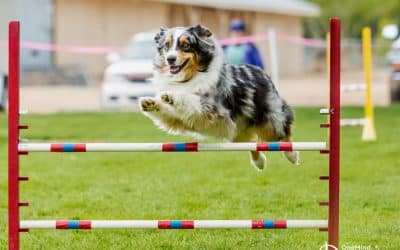Dogs are naturally known for their high energy levels, curiosity, and sociable character. As a dog owner, you may not find it unusual to see your pup play a little rough every once in a while and stick their snout where it doesn’t belong.
Unfortunately, this playfulness can sometimes get a dog in a lot of trouble — and if they’re left unattended, there’s an even bigger risk that they’ll get themselves into situations where they’re easily injured.
It’s part of your responsibility to keep your pooch away from danger and to attend to any problems they may have with their health, including injuries.
Below are four common injuries in dogs to familiarize yourself with:
Cuts, abrasions, and lacerations
A dog can sustain cuts, abrasions, and lacerations from various sources, like sharp objects or rough surfaces. It’s also possible to get these as “battle scars” from encounters with other animals, like street cats or other dogs. These types of injuries are usually easy to notice because they come with visible signs like bleeding, open wounds, swelling, and indications that the dog is in pain or distress.
To prevent these injuries from happening inside your home, it’s a good idea to keep sharp objects like broken glass, kitchenware, and tools out of your dog’s reach. When outside, it’s in your best interest to avoid taking your dog to places that are riddled with hazards, like busy car parks and nearby construction sites.
Your dog should also wear high-quality equipment like custom dog collars and be led using a durable leash. These dog products give you better control over your dog’s movement while guaranteeing your dog’s comfort and safety, ultimately allowing you to guide your dog away from dangerous objects and animals during your walks.
Sprains, strains, and muscle injuries
Sprains, strains, and muscle injuries can occur when dogs engage in vigorous physical activities or sudden movements that strain their muscles and ligaments. Typical signs of such injuries include limping, swelling, tenderness, or reluctance to put weight on a specific limb.
To ensure that you’re not placing your furry friend in any danger during your walks or playtime, prioritize warm-up and cool-down exercises before and after intense activities to prepare your dog’s muscles for the physical strain. You should also avoid overexerting your dog, and give them adequate rest periods between activities to allow for muscle recovery.
Moreover, maintaining a healthy weight for your dog can help reduce strain on their muscles and joints. If you aren’t sure what kind of diet your dog should observe, ask your vet or canine nutritionist for advice on a diet that suits your dog’s needs.
Fractures and broken bones
Just like you, your dog can suffer fractures and broken bones as a result of trauma, like from a bad fall or accident. Your dog might not be able to fully recover from a severe fracture or broken bone and could even die if you don’t act quickly enough.
That’s why it’s crucial to take the necessary steps to prevent your dog from getting themselves into nhigh-risk environments or situations where such accidents are more likely to occur. During your walks, for example, make sure you have a good grip on your dog’s leash to ensure you won’t accidentally let go and let them run into dangerous situations. At home, on the other hand, it’s a good idea to install dog fences and gates to prevent your pup from bolting out of the front door or the balcony and either falling or bumping into something dangerous.
You may be able to detect a fracture from a visible deformity or some swelling on your dog’s body. Other warning signs include your pup being in intense pain while walking and being unable to bear their weight. If they exhibit these signs, take them to your nearest animal hospital so that their injuries can be tended to as soon as possible.
Poisoning and ingestion of foreign objects
As mentioned above, sometimes dogs just can’t resist the urge to indulge their curiosity. But this puts them at a higher risk of coming across dangerous substances and foreign objects that they’ll accidentally ingest. Cleaning chemicals, medications, and toxic plants are just some examples of ordinary hazards in your household that can lead to poisoning or gastrointestinal blockages in dogs, as well as other forms of body damage. As such, it’s crucial to direct your dog’s attention away from these things and place them in areas where your furry companion can’t easily get to.
It’s also smart to install a variety of dog-proofing products in your home. Securing your trash cans with lids and locking your cabinets with child safety locks can discourage an inquisitive dog from prying these open and rummaging through their contents.
If you own dogs, it’s also advisable to steer clear of plants that are known to be toxic to dogs. Some examples include hemlock, tulips, pothos, peace lilies, foxgloves, boxwoods, and any mushroom you can’t identify as safe. To take extra precautions, avoid keeping these in your garden in favor of more dog friendly greenery.
To know if your dog has ingested something poisonous, watch out for the following signs:
- Vomiting
- Diarrhea
- Drooling
- Pale gums
- Agitation
- Convulsions
- Seizures
If your dog shows any of these signs, seek immediate veterinary care for proper diagnosis and treatment.
It can be challenging to ensure your dog’s health and safety from day to day, especially if their curiosity knows no bounds. In some cases, accidents can still happen, and it’s best to be prepared for these with a doggy first aid kit and your veterinarian’s number stored somewhere it’s easily accessed. But knowing about these common dog injuries will better equip you to take preventive measures and create a safe environment that significantly reduces your dog’s risk of unnecessary and avertible injury. That, in turn, will ensure for them a happy, healthy, and long life ahead



